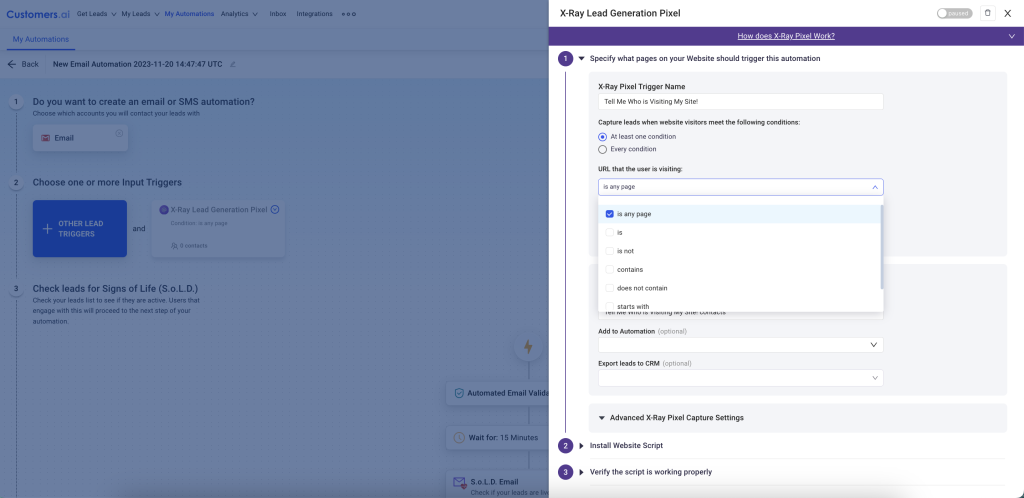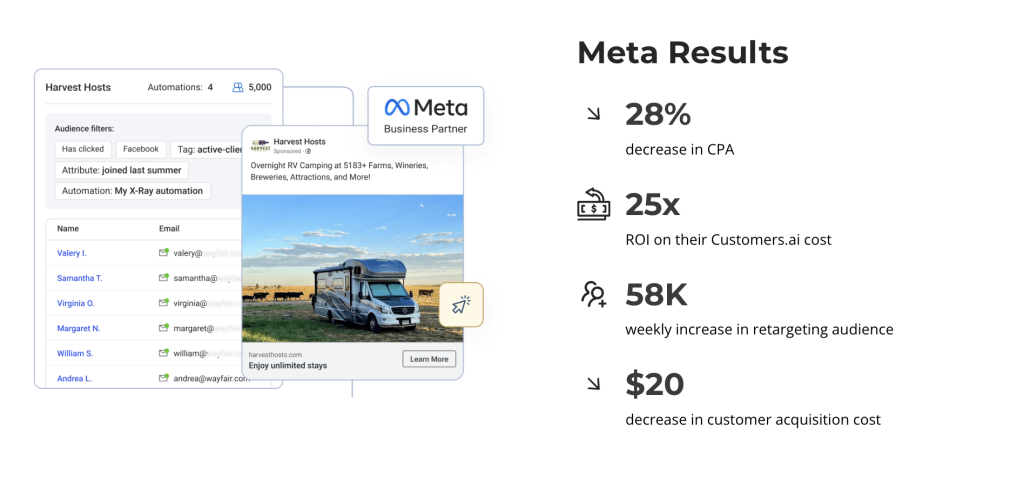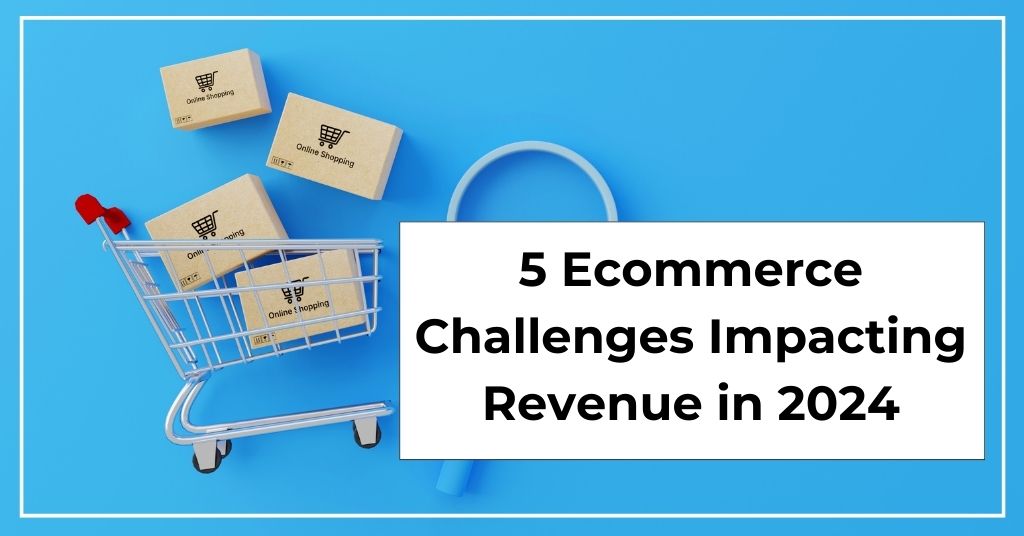If we’ve learned anything in Q1, it’s that 2024 isn’t messing around.
Between the phase-out of third-party cookies to the rollercoaster of Facebook Ads and Google’s algorithm whims, things are in a constant state of flux.
The good news is that while it might feel like chaos, we as marketers simply see these changes as new challenges we can overcome, new puzzles we need to figure out.
We’re nothing if not adaptable!
What makes this “chaos” so interesting is that while frustrating, it’s also exciting and ripe with opportunity.
These challenges are forcing us to adapt and innovate. They are forcing us to find new ways to reach customers and new ways to identify and understand the customer journey.
They are forcing us to become better marketers!
So, why not buckle up and dive into these challenges with the goal of not just surviving, but thriving in this chaotic ecommerce marketing world?
One of the biggest challenges for ecommerce marketers is the loss of third-party cookies.
While we’ve talked about this several times (here, here and here), the impact really can’t be understated, especially when it comes to attribution and revenue tracking.
For years we’ve relied on the likes of Google Analytics and third-party pixels to keep us honest and help us understand how our ad dollars were being spent.
Unfortunately, without third-party cookies, that becomes much more difficult.
Cross-channel tracking is messier, personalization isn’t nearly as personalized, and even some ecommerce platforms like Shopify and Klaviyo, which have built-in attribution toos, can’t give us the full picture.
It’s why ecommerce marketers are focusing on first-party data and why the phrase has grown so much in the past few years.
First-party data means you own your data.
You have control over it, you can measure it accurately, and you can target individuals much more effectively than with third-party data.
First-party data is one of the biggest selling points of Customers.ai and what marketers value the most.
Not only do we identify who is visiting your site but we give you that data. It’s YOUR data!
It’s your data to use in your email campaigns, ad campaigns, direct mail campaigns, etc. etc.
And when synced with your CRM, you can uncover some unbelievable customer journey insights and build really personalized campaigns.
For ecommerce marketers who are still wondering how to deal with the loss of cookies, this is the answer, and it’s free!
Want to try it out?
To install the Website Visitor ID X-Ray Pixel, sign up, go to your dashboard, and navigate to My Automations.
Select + New Automation and get your pixel. We have easy install options for Google Tag Manager, WordPress, and Shopify, or you can install the pixel manually.

2. Facebook Ad Issues & Targeting Limitations
If you’re an ecommerce marketer running ads on Facebook, you know how unbelievably frustrating it’s been.
Let’s forget the performance issues for a second (which are all over the place) and simply look at the reduction in targeting options.
According to Meta,
“Starting January 15, 2024, we’re removing or consolidating some detailed targeting options that relate to topics people may perceive as sensitive. Existing ad sets with impacted targeting options will continue to run until March 18 2024, but will require you to update your targeting selections. After this date, we will stop delivering ads to the discontinued detailed targeting options, and impacted ad sets may be paused.”
What makes this so difficult is that Meta didn’t tell us which targeting options they were getting rid of, leaving us to just….guess?
As Social Media Today pointed out, this reduction in targeting pushes people toward broad targeting and Advantage+, forcing advertisers to rely on Meta.
Unfortunately, as we’ve touched on in the past, without cookies and without Click IDs, targeting is much less effective and much more expensive.
Unless…
What if we could bring in that first-party data we just talked about?
One of the powerful features of Customers.ai is the Restore tool. It’s essentially our ‘Cookieless Facebook Ad Pixel Replacement’ that collects all of your website visitor data and sends it directly to Facebook.
Harvest Hosts, an RV Hosting & Camping service, recently started using Restore and they have already seen some amazing results.

The reason for this type of improvement is that with Restore and first-party data, you are targeting people who are genuinely interested in your service.
With Customers.ai, you can also create extremely segmented audiences and send them directly to your Facebook custom audiences, allowing for very specific retargeting campaigns and better ROAS.
Facebook can only work with the data it has but so can you. Take your first-party data and make it work for your ad campaigns!
3. Retention & Loyalty
We all know that the cost of acquiring a new customer isn’t cheap.
In fact, according to a report from FirstPageSage, the average commerce CAC is over $60.
New customers are not only more expensive than existing customers, they are also less likely to purchase.
Retention and loyalty are key to ecommerce success and while most of us know this, it’s certainly easier said than done. Especially with customer expectations higher than ever.
So, how do we improve retention and drive return shoppers?
There are certainly a few keys (customer experience, loyalty programs, engagement, etc.) but what it really comes down to is understanding the customer, what it is they want, and engaging them with the right message at the right time.
For example, a new customer comes to your site, finds a product, adds it to the cart, and leaves before checking out.
While they are a high-intent shopper, you aren’t going to send them the same message you would send a returning customer who did the same thing.
Instead, you might give the return customer a bigger discount or encourage them to use their rewards to finalize their purchase.
Of course, this entails having the right techstack and flows in place to act but if you truly want to improve your retention and drive up return visitor revenue, it’s time to get started.
[Learn more about customer journey tracking]
4. Google Updates
Ah Google. Our savior and nemesis. When things are good, they are good and when things are bad, well…it goes without saying.
Like all of the other major tech companies, Google has plenty on the radar this year.
We already touched on cookie deprecation in Chrome but there are also things like algorithm updates, new email rules, and ad changes impacting ecommerce revenue left and right.
Let’s take a look.
New Bulk Sender Rules
We’ve talked about the new bulk sender rules pretty extensively, including our Spam Complaint Rate Report, but it’s still a really big deal for anyone sending emails.
Google (and Yahoo) have effectively drawn a line in the sand when it comes to bulk senders and Gmail addresses.
If you aren’t adapting to these new rules, which include a below 0.3% spam complaint rate along with domain authentication and unsubscribe requirements, then you are in trouble.
Make sure you are up to date (see here).
Google Algorithm Updates & SGE
Remember the days when SEO was easy and the right content and architecture could land your site in the top spot on Google?
Yeah, those days are long gone and if you’ve been paying attention, you know there are some big changes impacting ecommerce performance.
Helpful Content Update
Google is always pushing out some new update but the big one in 2024 is the Helpful Content Update.
I am not going to get into the nuts and bolts of it but if you are interested, read this piece from Lily Ray at Amsive or this piece on how HCU is impacting ecommerce.
The gist? Search results aren’t great and it seems like Google is still figuring things out.
Unfortunately, a number of sites have seen big drops in ranking leading to less traffic and lower revenue.
SGE
SGE, or Search Generative Experience, is the next phase of Google Search, focused on integrating AI into the search experience.
If you aren’t famiiar with SGE, I highly recommend you read this article from iPullRank. It does an amazing job breaking down what SGE is, how it works, and the impact on site performance.
At this exact moment in time, the results are a bit unknown but with rumors that this could roll out this year, ecommerce marketers need to be prepared.
Rising Google Ad Costs
As we’ve seen across all ad platforms, costs are rising, and this is certainly the case with Google Ads.
Why?
Well along with the general economics of supply and demand, if you paid any attention to the Google antitrust trial, you’d know Google has been trying to “shake the cushions” when it comes to generating ads revenue.
Google is beholden to stock holders and that means a focus on profits and higher costs for advertisers.
For years ecommerce marketers and advertisers alike have relied on Google to help us drive sales. While that certainly isn’t changing in the immediate term, how we interact with their platform needs to.
5. Privacy & Trust Concerns
Isn’t privacy really the theme of the last few years? Yes, but it’s also a huge challenge this year.
It’s what has led to these huge changes in the tech platforms and the challenge to attribution and marketing – the removal of any personal identifiable information.
We all know about the EU regulations and now we have Google enforcing consent mode.
For any store doing business internationally or even here in the states, there is a lot to keep up with!
A few months back, Courtney Fenstermaker of InfoTrust joined us to talk about some of these issues and she specifically called out how hard it is to stay on top of the changes.
She suggested using tools like the IAPP US State Privacy Legislation Tracker to keep track of state to state updates.
She also suggested making sure you understand your risk to avoid any legal issues (for more awesome tips from Courtney, get the replay here).
Privacy is complicated but imperative to the success of any ecommerce business. Make sure you are keeping up with trends to avoid fines, loss of revenue, and more.
Future-Proofing Your Ecommerce Store
Sure, we love to think we can future-proof our business but can we?
We think so.
While you can’t predict the future, you can certainly plan, and that means adapting to what is happening and getting ahead of it.
Heck, Google told us they were deprecating cookies in June 2021 and people barely batted an eye. Now they are scrambling to figure out how to deal with this change and it’s impacting a lot of businesses.
The key to ecommerce success this year and beyond is understanding the overall landscape, understanding your customers, and putting the right technology in place to be successful.
If you are looking to capture first-party data, get back your ad audiences, lower CPAs, and improve retention, then Customers.ai should be part of your stack.
Request a demo or sign up for free and see how we can help your ecommerce store grow!
See the Visitors Hiding on Your Site
Book a demo of Customers.ai’s U.S. website visitor identification, customer journey insights and remarketing platform to skyrocket conversions and sales.
Important Next Steps
- See what targeted outbound marketing is all about. Capture and engage your first 500 website visitor leads with Customers.ai X-Ray website visitor identification for free.
- Talk and learn about sales outreach automation with other growth enthusiasts. Join Customers.ai Island, our Facebook group of 40K marketers and entrepreneurs who are ready to support you.
- Advance your marketing performance with Sales Outreach School, a free tutorial and training area for sales pros and marketers.
